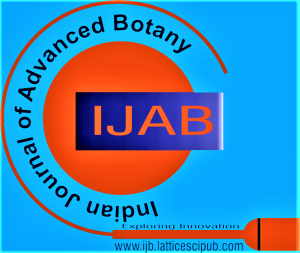![]()
Phenotypic Characterization of Chickpea (Cicer Arietinum L.) Base on Agromorphological Traits at Fedis Eastern Oromia, Ethiopia
Bekele Kindie1, Solomon Mengistu2
1Bekele Kindie, Ethiopian Biodiversity Institute Harar Biodiversity Center, Harar, Ethiopia.
2Solomon Mengistu, Ethiopian Biodiversity Institute Harar Biodiversity Center, Harar, Ethiopia.
Manuscript received on 28 December 2022 | Revised Manuscript received on 20 January 2023 | Manuscript Accepted on 15 October 2023 | Manuscript published on 30 October 2023 | PP: 6-15 | Volume-3 Issue-2, October 2023 | Retrieval Number: 100.1/ijab.A2013043123 | DOI: 10.54105/ijab.A1013.103223
Open Access | Editorial and Publishing Policies | Cite | Zenodo | Indexing and Abstracting
© The Authors. Published by Lattice Science Publication (LSP). This is an open-access article under the CC-BY-NC-ND license (http://creativecommons.org/licenses/by-nc-nd/4.0/)
Abstract: As study indicated chararacterization of crops based on agro morphological traits are important for breeding to select the best quality accession in the field gene bank. 34 chickpea accessions were characterized based on agro morphological traits. All studied accessions were characterized by absences of plant pigmentation and most accessions were characterized by erect plant growth type and pink flowering color. Accessions were characterized by medium pod length and angular ram’s seed shape. Majority of accessions were characterized by rough seed textures and brown to reddish brown seed color. Most accessions were characterized by medium seed size and early flowering days. The highest coefficients of variation were observed for Days to 50% flowering (0.57%) and least coefficient of variation (0.04) for Plant height. 32 accessions were flowering lately than the check varieties and 25 accessions were more lately matured than the check varieties. Twenty accessions produced more primary branches than the check varieties. 24 accessions produced higher pods per plant compared to the check varieties. Cluster I consisted of eleven accessions and cluster II consisted of eighteen accessions and also cluster III consisted of five accessions. The intra cluster distance ranged from 474.48 to 953.36. There was significantly strong positive correlation observed between days to 75% maturity with plant height(r=1.00) while weak and negative correlation were observed between days to 50% flowering days with secondary branch but no correlation secondary branch with 100 seed weight.
Keywords: Descriptor, Agromorpholgy traits, accessions, Genetic diversity, Correlation.
Scope of the Article: Plant Molecular Biology
